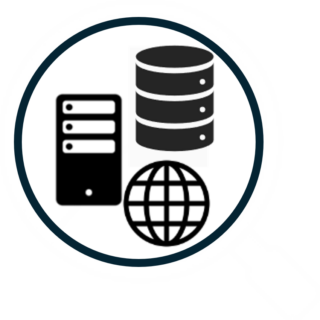How to Organize Data Security?
Classifying data and applications is a critical step in establishing an effective cyber-resilience strategy. Here is an approach to identify and then classify data and applications.
 Assets identification
. Data: Identify the main data managed by the organization, including personal, financial, operational, and research data.
Assets identification
. Data: Identify the main data managed by the organization, including personal, financial, operational, and research data.. Applications: List all applications used to process, store, or transmit these data.
. Identify those managed internally and those outsourced (SaaS, etc.)
 Application classification
Operational Importance:
Application classification
Operational Importance:. Classify applications based on their importance to the business operations, from critical to non-essential.
. Sensitivity of the Processed Data: Consider the type of data processed or stored by the application to help determine its sensitivity level, especially in terms of the risks of disclosure or misuse of this data.
 Risk Assessment
This is not about conducting a risk analysis, which can be lengthy and costly, but rather focusing on the applications critical to the business.
Risk Assessment
This is not about conducting a risk analysis, which can be lengthy and costly, but rather focusing on the applications critical to the business.. Risk Analysis: Assess the risks associated with each category of application, but especially those critical to the business. It's difficult to estimate the type of cyber threats, as threats evolve rapidly. The focus should instead be on the severity of the impact on the business or organization.
. Protection Measures: Determine the existing cyber-resilience security measures and define their effectiveness.
Manage cookie consent
To provide the best experiences, we use technologies such as cookies to store and/or access device information. Consenting to these technologies will allow us to process data such as browsing behavior or unique IDs on this site. Failure to consent or withdrawing consent may negatively impact certain features and functions.
Functional Always active
Storage or technical access is strictly necessary for the purpose of legitimate interest of allowing the use of a specific service explicitly requested by the subscriber or Internet user, or for the sole purpose of carrying out the transmission of communication on an electronic communications network.
Préférences
L’accès ou le stockage technique est nécessaire dans la finalité d’intérêt légitime de stocker des préférences qui ne sont pas demandées par l’abonné ou l’internaute.
Statistics
Le stockage ou l’accès technique qui est utilisé exclusivement à des fins statistiques.
Storage or technical access that is used exclusively for anonymous statistical purposes. Absent a subpoena, voluntary compliance by your Internet Service Provider, or additional records from a third party, information stored or retrieved for this sole purpose cannot generally not be used to identify you.
Marketing
Storage or technical access is necessary to create Internet user profiles in order to send advertisements, or to track the Internet user on a website or on several websites with similar marketing purposes.
